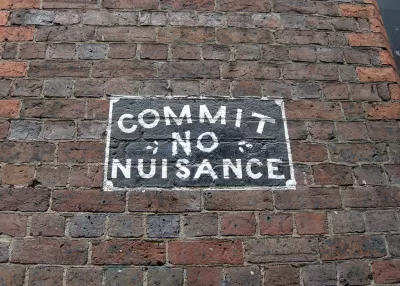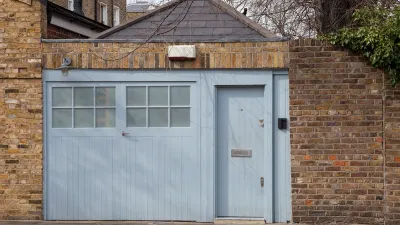Examining the growing demand for alley homes in Washington, D.C.—where alleys were once considered "evil."

Developers and property owners in Washington, D.C. are responding to a wave of interest in alley living—a residential arrangement once considered a sign of squalor is now considered unique and urban. Alley dwellings are NOW priced at upper levels of the housing market.
Mary Hui provides in-depth coverage of the trend in the D.C. real estate market:
While the rehabilitation of vacant alley buildings into residential homes is not new to the city, the recent flurry of activity involving alleys — both from developers like Ruppert and individuals like Wing — points to a growing public consciousness of all that an alley can hold.
Hui presents the growing popularity of alley residential dwellings as a symptom of the affordable housing crisis. "Alley dwellings, experts say, help by creating housing options in existing, underused space," writes Hui.
Alley programs are becoming more common in other cities, too. "In Austin, the Alley Flat Initiative has identified a network of vacant and underused alleys in the city’s east, and is working to build alley flats in the residential lots facing these alleys," according to Hui.
In Denver, the Single Family Plus housing initiative "will kick off next spring with the goal of building 250 backyard or alley homes over five years." In Denver's case, the program is designed to build Accessory Dwelling Units (ADUs), which differ in definition from alley lot dwellings, but they reflect a similar purpose, according to Hui: "putting free space to use."
FULL STORY: Are alleys the new frontier for D.C.’s housing market?

Planetizen Federal Action Tracker
A weekly monitor of how Trump’s orders and actions are impacting planners and planning in America.

San Francisco's School District Spent $105M To Build Affordable Housing for Teachers — And That's Just the Beginning
SFUSD joins a growing list of school districts using their land holdings to address housing affordability challenges faced by their own employees.

The Tiny, Adorable $7,000 Car Turning Japan Onto EVs
The single seat Mibot charges from a regular plug as quickly as an iPad, and is about half the price of an average EV.

Seattle's Plan for Adopting Driverless Cars
Equity, safety, accessibility and affordability are front of mind as the city prepares for robotaxis and other autonomous vehicles.

As Trump Phases Out FEMA, Is It Time to Flee the Floodplains?
With less federal funding available for disaster relief efforts, the need to relocate at-risk communities is more urgent than ever.

With Protected Lanes, 460% More People Commute by Bike
For those needing more ammo, more data proving what we already knew is here.
Urban Design for Planners 1: Software Tools
This six-course series explores essential urban design concepts using open source software and equips planners with the tools they need to participate fully in the urban design process.
Planning for Universal Design
Learn the tools for implementing Universal Design in planning regulations.
Smith Gee Studio
City of Charlotte
City of Camden Redevelopment Agency
City of Astoria
Transportation Research & Education Center (TREC) at Portland State University
US High Speed Rail Association
City of Camden Redevelopment Agency
Municipality of Princeton (NJ)





























